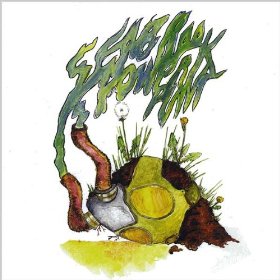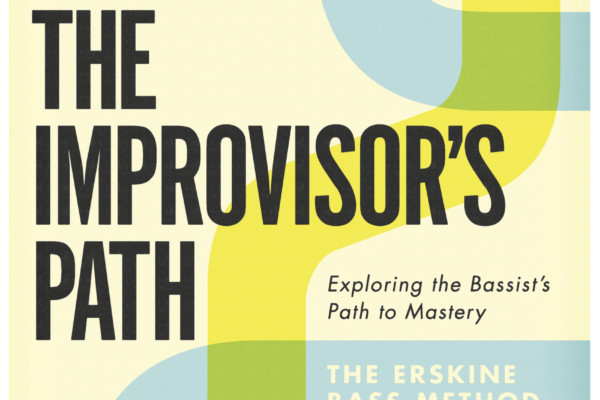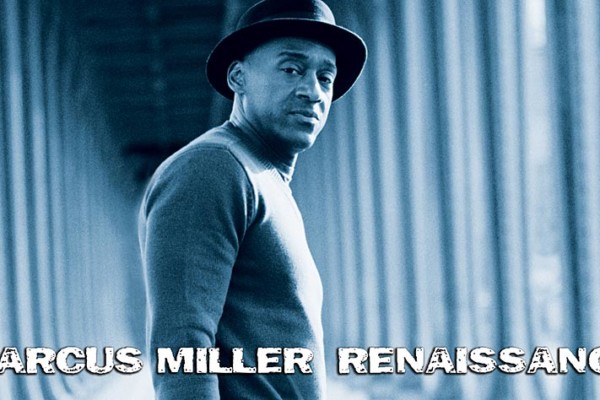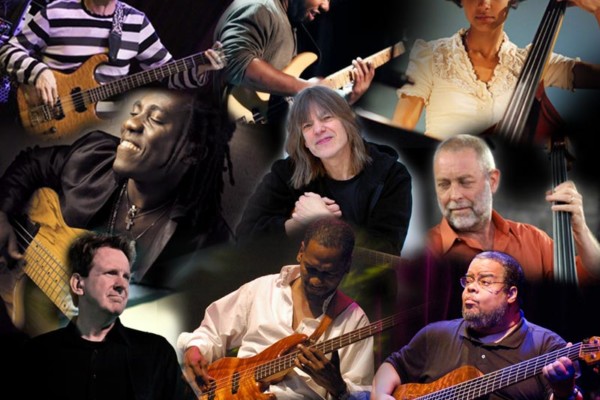A review of “Seabrook Power Plant”
 Brandon Seabrook’s Seabrook Power Plant is a brutal, take-no-prisoners record. The music sits between free jazz and Black Sabbath-influenced sounds but places the banjo firmly at the center of the music. It is quite engaging despite a forbidding exterior. For sure you will hear things in this record you have never heard before.
Brandon Seabrook’s Seabrook Power Plant is a brutal, take-no-prisoners record. The music sits between free jazz and Black Sabbath-influenced sounds but places the banjo firmly at the center of the music. It is quite engaging despite a forbidding exterior. For sure you will hear things in this record you have never heard before.
Seabrook is the leader, a Brooklyn-based guitarist and banjo player who has been making a name for himself in the improv (Marc Ribot, Roswell Rudd) and radical Jewish music scenes (Naftule’s Dream). He is joined on this record by his brother Jared on drums and the largely self-effacing Tom Blancarte on double bass. The name of the band plays on the infamous Seabrook Nuclear Power Plant in New Hampshire. It’s a band with very little web presence but a huge sound.
Blancarte plays very much a background support role on bass on this record but he is very solid and supportive and at the same time passionate and powerful, There are a few moments where his arco playing is given a chance to shine and his overtone soaked bowing is a big part of the most successful pieces on this record.
The opener, “Peter Dennis Blandford Townsend”, named after The Who guitarist, feels almost like a listener initiation test: an intense assault of bombastic banjo and drums until it morphs onto a lighter freeform interaction between banjo, upper register bass and lighter drums. I guess they wanted to make sure we realized this was not going to be easy listening.
Immediately as “Ho Chi Minh Trail” began, I started to warm to the band. There is an obsession with 1970’s American politics in the titles. This starts with spiraling middle-eastern influenced banjo figures as bass and drums dance – there are some intriguing ostinatos as the piece develops and, as the drums and bass continue to pummel relentlessly, there is a stunning interlude where Townsend bows his banjo to create otherworldly and beautiful multi-tracked sounds. The end, when it comes, is sudden to an extreme.
“Waltz of the Nuke Workers” features an idyllic arpeggiated guitar chord that keeps the rhythmic forms of its motif as it swiftly mutates to a thing of creeping horror. The piece then allows Seabrook the opportunity to craft his improvisation around the motif and the varying degrees of consonance and dissonance that develop. A second theme arises around halfway through. This is a piece that uses repetition and dissonance effectively to create a mood.
“Occupation 1977” develops from an interplay of swirling banjo over morse code bass and drum accents into an abstract arco bass feature for Blancarte who uses the bow to create overtones over his broad strokes of sound. It’s a track of many parts as it then features a punk-like guitar drone over clubbing drums and throbbing bass setting up an ominous finale with Black Sabbath-like tritones and distortion.
“Base Load Plant Theme” begins as a jerky cartoon-show-like theme and develops into repetitive eighth notes colored and accented in quite fetching ways. A heavy metal like section blasts the song towards its conclusion.
“I Don’t Feel So Good” is a majestic Sabbath-influenced dirge. There is dissonance here to revel in. The drums then bludgeon as Seabrook shreds in a bizarre and rather mindless breathless interlude before the dark grunge leviathan of a riff returns. At times this music could use a lot more space but it has power in spades.
“Feedlot Polio” starts with 30 seconds of sensational delay effected banjo – it’s only a pity that this section isn’t longer, but there are some interesting uses of delay within the freeform jam that follows amid the barrage.
“Doomsday Shroud” that closes the album begins as a fascinating soundtrack-like mix of overtones, drones and what sounds like chanting. For once the drums are restrained and the mood gradually develops a real sense of mystery. The guitar eventually leads the band in yet another simplistic rhythm but this has the feel of the shamanistic ritual this time as opposed to punk primitivism. Bowed tones and overtones from bass and guitar then return along with to explore an ominous, intense soundscape. This is a quite stunningly effective piece of music.
Brandon Seabrook was attracted to the banjo because of its percussive nature – such a different instrument to the guitar and he has been successful in using it very musically here. The music is not for everyone – but then what good music is? Bass and drums take a very supportive background role and even if it sometimes is in danger of becoming a little too post-modern and ironic there is a visceral joy to the music making here that at times makes you laugh out loud in its audacity. The final track ‘Doomsday Shroud’ is a masterful soundscape and worth taking the time to explore.
Recommended for all lovers of banjo driven avant-garde post-modern heavy metal freeform improvisation!
Preview and download Seabrook Power Plant
More from the band
Tom Blancarte’s web site
Amazon
CD Baby
Track list
- Peter Dennis Blanford Townshend
- Ho Chi Minh Trail
- Waltz of the Nuke Workers
- Occupation 1977
- Base Load Plant Theme
- I Don’t Feel so Good
- Feedlot Polio
- Doomsday Shroud
The Band
Brandon Seabrook – guitar, banjo
Tom Blancarte – bass
Jared Seabrook – drums




I recommend you check out the final track if you get the chance, it's a wonderful soundscape.
I recommend you check out the final track if you get the chance, it's a wonderful soundscape.